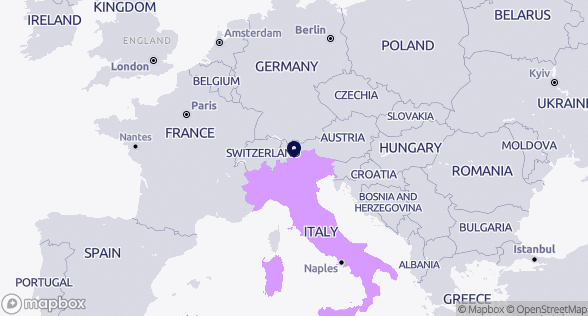
Prato
Italy
PUJ - Prato
The PUJ project sought to renew or ‘renature’ several districts of Prato experiencing severe social, economic and environmental problems, in a sustainable and inclusive way. It focused on three pilot locations: a covered market in Macrolette, three apartment buildings in St Giusto, and the Estri company site on one of the busiest roads in the city in the Soccorso district. The aim was to transform them through the ‘Urban Jungle’ approach. According to this approach, the new vegetation will break down pollutants, improve water management, and reduce energy use. The urban Jungle returns areas to public use as green amenities that improve well-being. The project has also supported initiatives to foster a new environmental culture and especially urban forestry. This has included a guidebook, workshops, a toolkit for teachers and Greenapes - an app designed to promote sustainable behaviours through rewards, targeting citizens and, partners hope, in time, employees. Partners expect that the approach will be extended to the rest of the city.
This is a case study as part of an UIA report. You can access all of the project's resources on its project collection page.
2. Prato urban jungle and Just and Green Transitions
2.1 What are the implications for Prato?
Since 2014, Prato has been pursuing an overarching strategy called the Prato Green Deal (PGD) to coordinate all the environment-oriented policies that contribute to realising the city’s vision of climate neutrality; the PGD coordinates the city’s ecological transition, circular urban, and smart city policies. The Prato Green Deal has been delivered through a multitude of specific planning and governance tools activated over the years. These include environmental and sustainable urban mobility policies, as well as policies on energy (in public buildings and in individually-owned apartments in apartment buildings), and the circular economy.
Since 2019, the city has also been pursuing a climate neutrality strategy linking urban planning (Structural Plan), environmental planning (SECAP), Urban Forestry (Prato Forest City), and Health Planning (in partnership with the Tuscany Region).
Prato is the first European city to have an overall urban forestry strategy at the urban level with a planning approval process that obliges private developments to integrate urban resilience. The city is seeking to reduce and mitigate its emissions by planting 190 000 trees, one for each citizen. These measures run alongside efforts to persuade citizens to reduce their energy consumption by reducing car travel, domestic energy use and other behavioural changes.
As for vulnerable groups, this is a new field of interest for the city and policies are at an early stage. Policymakers wish to ensure that low-income groups on state benefits and other groups, including migrants and women, are benefitting from the city’s climate initiatives.
Finally, as Prato has been selected to take part in the 100 Climate Neutral Cities programme, it might further develop its urban jungle approach under this programme.
2.2 What barriers has Prato faced implementing the just & green transition?
Prato is a dense urbanised area which has historically eschewed nature-based solutions. In addition, when such solutions have been implemented, they have focused on more privileged areas. Designing new solutions inclusive of all the city’s residents, and especially vulnerable residents, required approaches, visions and skills which were historically absent from the municipality. The city has little experience of engaging with vulnerable groups on sustainable city issues.
3. How does PUJ promote the just & green transition?
Within PUJ, PRATO is seeking to develop its regeneration programmes and Urban forestry Strategy one step further, by focusing on specific vulnerable neighbourhoods. In Macrolotto Zero, the project builds on the Prato Green Deal financed under the Regione Toscana ERDF programme from 2014 onwards. This area had been the centre of the Fast Fashion sector but many buildings had fallen into disrepair. It is now known for its high proportion of Chinese immigrant workers and residents. Regenerating Macrolotto Zero has involved the selective demolition of industrial buildings to create new public open parks, squares and gardens, natural areas accessible to all. For example, the former Forti textile factory is being converted into a social and commercial hub and now houses a covered market and workshop space. In addition, the Urban Forestry Strategy seeks to plant trees in every neighbourhood, but especially in the socio-economically vulnerable ones, thus benefitting everyone.
The project will green the environment around social housing in the St Giusto estate built in 1992 on Via Turchia. It is a relatively deprived neighbourhood. A vertical garden with a new entrance pergola and social spaces in a new garden setting will be constructed. It is the first time that such a vertical garden solution is being constructed for apartment buildings.
The project has increased the permeable and green surfaces by 14200 m2 (two football pitches), with the creation of urban jungles in 2 public pilot areas of the city by transforming yards, roofs, buildings, walls, barriers, etc., into green features. For example, it has installed a shade-giving green roof structure on the covered market of the Macrolotto zero area and a vertical garden for social housing in St Giusto. The project has also transformed 4800 m2 of vacant industrial grounds / surfaces into green gardens with the creation of a network of vegetable gardens.
4. Keys to success
a. Clear and long-term vision
The city of Prato’s 2018 Master Plan sets out a clear green vision which involves the densification of urban tree cover and an urban jungle approach in order to improve environmental performance and mitigate emissions.
b. Co-creating with all residents
The city has a strong commitment to co-creation with residents and businesses in the three target areas. However, in Macrolotto zero they have been less successful at engaging with the large Chinese community. In St Giusto there have been tough meetings with tenants who had their own priorities for regeneration on the estate - especially around heating. The use of participatory tools developed by Legambiente and the new digital platform Greenapes have helped the city to build support for its urban forestry initiatives.
5. Scaling up and replication potential
A fourth site is being greened on the former main road out of the city, Via delle Pleiade, which has some of the heaviest traffic in the city. This is not financed by the ERDF grant but can be seen as an extension of the project.
Recent heatwaves across Europe have shown the value of nature-based solutions and particularly intensive tree planting in reducing the urban heat island effect and improving air quality. Every city has the potential to increase urban tree cover, whether by lining streets with trees or by following PUJ’s approach using dense vegetation cover in different urban settings.
About this resource
The Urban Innovative Actions (UIA) is a European Union initiative that provided funding to urban areas across Europe to test new and unproven solutions to urban challenges. The initiative had a total ERDF budget of €372 million for 2014-2020.
Similar content






Want to replicate this urban practice in your city?
Apply to an EUI City-to-City Exchange
Connect with a peer city who can bring you solutions and expertise and apply together to receive EUI support
More infos on EUI websiteBrowse existing Innovative Actions looking for Transfer Partners and cities willing to do a City-to-City Exchange looking for peers